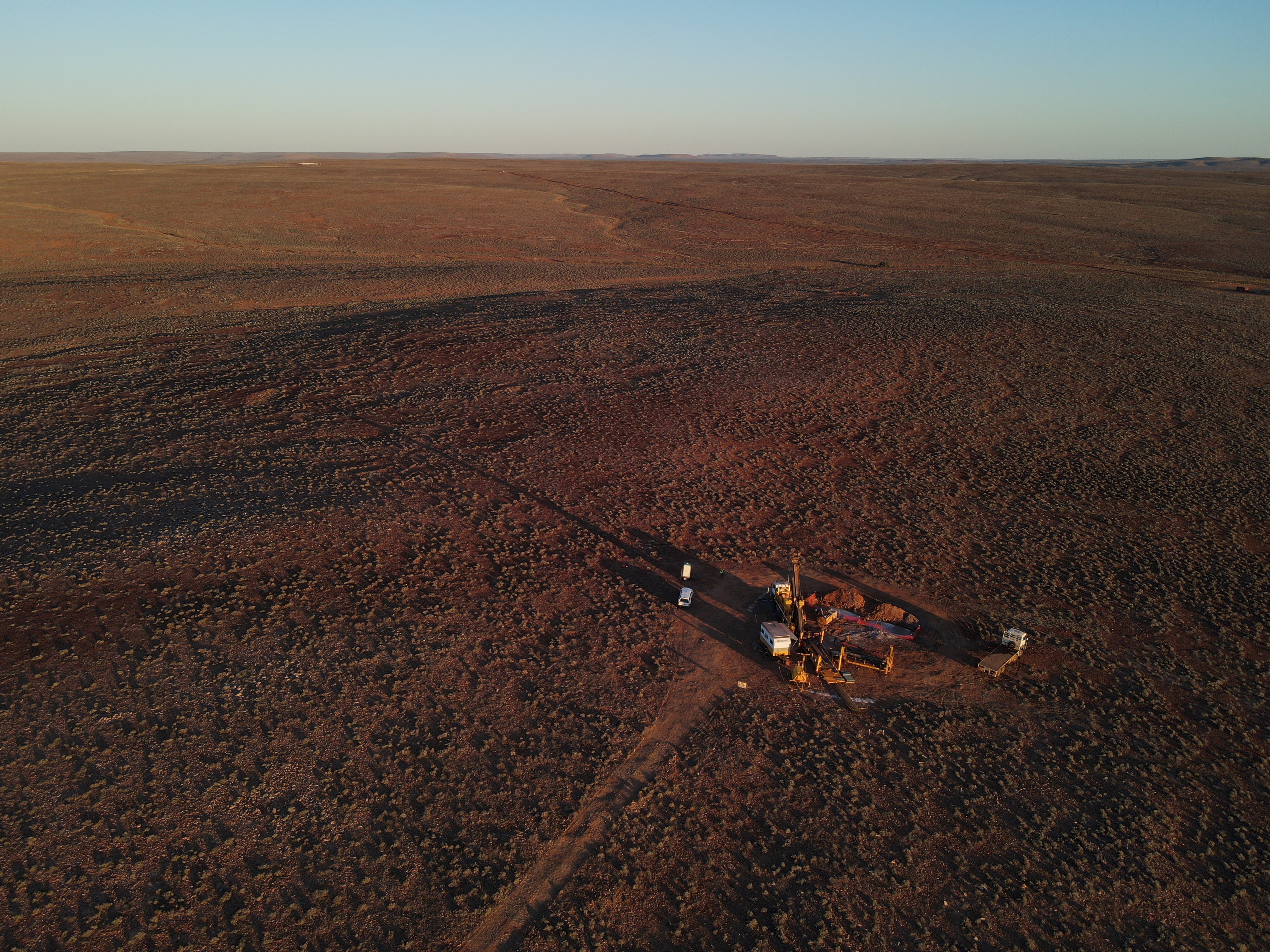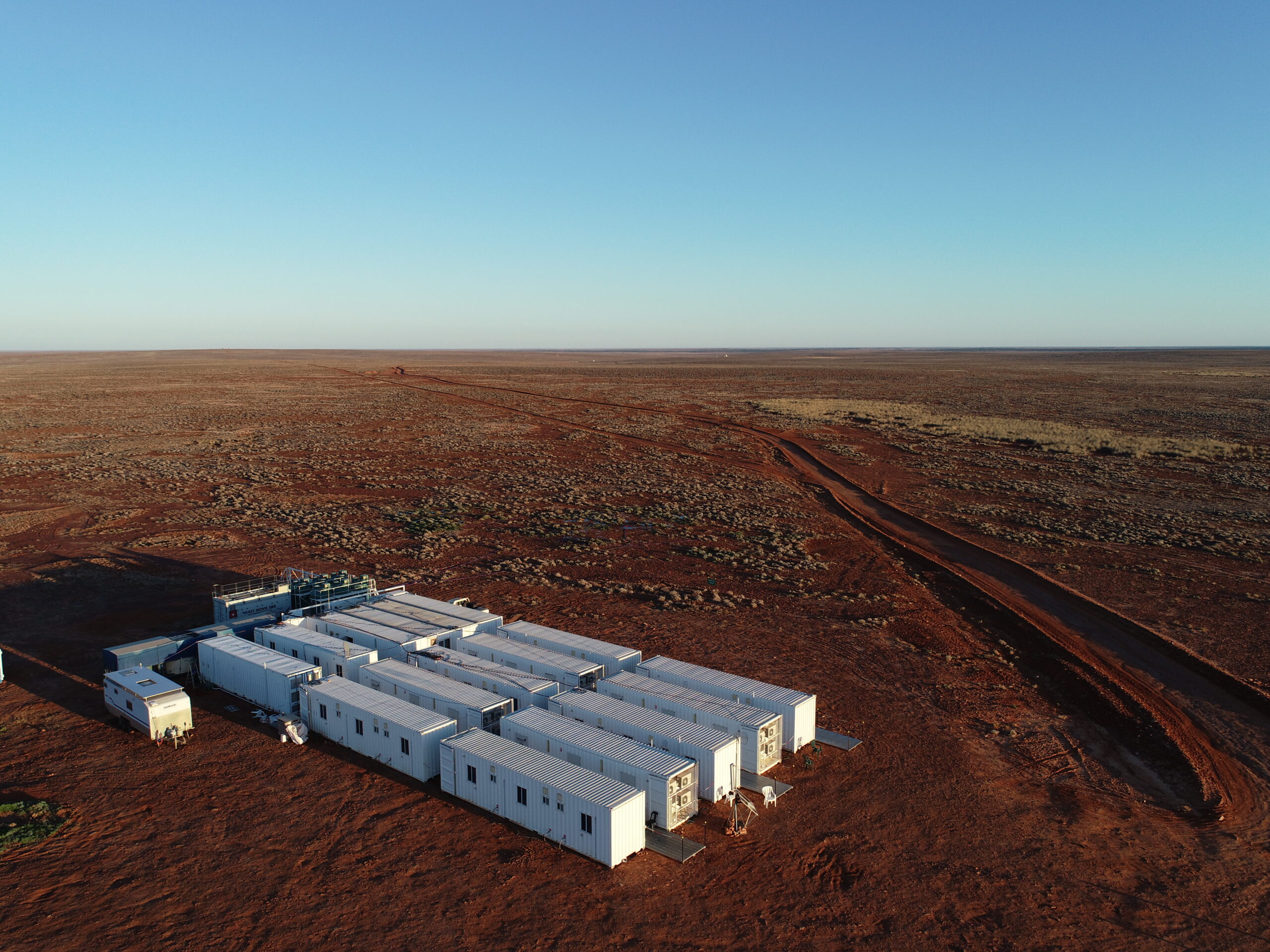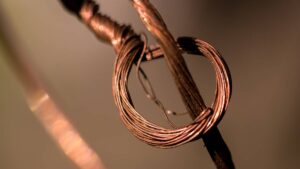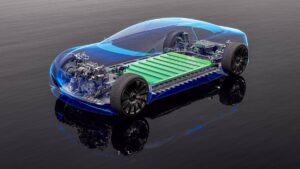Q+A: Coda Minerals boss Chris Stevens on why copper prices have to go higher

Pic: Reubs/Coda Minerals
- Global miners are spending less exploring for copper now than they were a decade ago
- It comes with forecasters predicting electrification will double global demand to 50Mt by 2050
- Coda Minerals MD Chris Stevens tells us why opportunities abound for explorers in the copper space
Just how hard is it to find a copper deposit?
Even harder when you’re not looking.
S & P Global, one of the world’s leading price agencies and commodity forecasters, think that demand for copper could double from 25Mt in recent years to 50Mt by 2050.
Yet exploration budgets have become smaller since the last boom.
After peaking at US$1.41 billion in 2012, by 2021, as copper prices hit all time highs of US$10,700/t and more, major miners were putting just US$820.8m into the hunt for the red metal.
Sheesh.
A 41% plus fall in nine years, it is a stark reminder that the homework needed to power the energy transition is being set, but not completed.
In that context, those in the field say prices will need to go higher to encourage investment in mines that previously would not have been developed, with most of the large, easy discoveries already made.
At US$8922/t yesterday prices are already at levels considered strong by historical standards. For explorers with their ducks in a row, this is a good position to be in.
“There would have to be a discovery equivalent to 5-10 Escondidas to fill in the deficit,” Coda Minerals (ASX:COD) CEO and executive director Chris Stevens, a mineral economist by training, says.
Escondida, owned by BHP (ASX:BHP) and Rio Tinto (ASX:RIO), is the world’s largest copper mine producing over 1Mt of metal a year in Chile.
“The chance of that discovery, in my opinion, is as close to zero as anything could possibly be because the dollars are not being spent on exploration. You can’t find something you’re not looking for.
“The other thing is that deposits the size of Escondida tend to be reasonably simple or reasonably easy to find. So in terms of supply, it’s just not coming online. We know what the predictable and likely copper supply coming online is and it’s just simply not enough.”
Coda Minerals was up around 30% in one day on Friday last week, a day after releasing a scoping study for its Emmie Bluff copper and cobalt deposit at the Elizabeth Creek project in South Australia’s Gawler Craton.
Located down the road from where BHP is merging with OZ Minerals (ASX:OZL) to consolidate the massive Olympic Dam, Prominent Hill and Carrapateena mines into one portfolio, Elizabeth Creek is showing plenty of promise.
The project would deliver 317,000t of copper and 14,400t of cobalt over 14 years, delivering $5.7 billion of revenue at average copper prices of US$8800/t and cobalt prices of US$60,627/t, with an NPV of $570m and internal rate of return of 26.5%.
It’s envisioned as a two step process, consisting of ~1-year of copper-cobalt concentrate production to drive early cash-flow (capex $277m) followed by a second phase involving the construction of a hydrometallurgical plant using the Albion Process to produce ~13
years of the higher value copper cathode, battery-grade cobalt sulphate, zinc carbonate and silver doré (capex $320m).
The study’s release comes almost two years after Coda and its since merged JV partner Torrens Mining discovered what could potentially be a larger IOCG style find called Emmie Bluff Deeps.
That sent Coda on a run which has since slowed. But the scoping study has revived interest in one of a handful of copper explorers in Australia with development potential.
We spoke to Stevens last week on the bright outlook for copper and what it means for companies in Coda’s position.
Ahead of the merger with Torrens I think the price went up to around $1.50 with the initial discovery, what’s been the difference between the kind of exuberance around the initial discovery of Emmie and the more measured reaction around the work since and the scoping study?
“There’s actually a simpler explanation as the $1.76 peak had absolutely nothing to do with the discovery of the deposit that’s in this study.
“So we listed off two of the three deposits that are in this study and then we effectively turned Emmie Bluff which was a historical discovery into a very strong resource. None of that in any way, shape or form had anything to do with the $1.76 share price peak that was due to the discovery of a completely different deposit called Emmie IOCG.
“The names are annoyingly and confusingly similar but they’re not the same deposits. They’re probably linked geologically to some extent, certainly the same set of plumbing, but that was the discovery of potentially a tier one, world class IOCG a la Carrapateena and Olympic Dam.
“The subsequent drill results were very instructive, they’ve given us a lot of information, 19 out of 21 from memory of those drill intercepts were mineralised and the majority of them were actually thicker and higher grade than the discovery hole. But none of that is actually in this scoping study, we’ve always effectively had two projects in one area.
“The first is the copper-cobalt, and the second is the copper-gold, which is the thing that kicked off the share price rise. So nobody in that fever bought because of the copper-cobalt, they are completely separate. So from the point of view of the share price reaction yesterday they may as well be different companies.
“I think Emmie Bluff, the copper-cobalt and the subject of the scoping study has never been particularly well understood, that may also have something to do with the share price. Totally different deposits and discoveries.”
Coda Minerals (ASX:COD) share price today:
You’ve got sort of two copper investment markets within the same project.
“One is higher risk, but undoubtedly higher reward. By the way, the hunt is still very much on and we’ve got people in the field doing advanced geophysics as I speak and we’ve just done another big geophysical survey.”
“So we’re target generating and trying to use the geophysics to hone in on the structure that would have deposited the copper in the IOCG, so the copper-gold discovery. So that’s still very much a live opportunity. In reality, if that sounds intuitive IOCG, then the value would be many, many multiples of the $570 million pre tax NPV in the study.
“But they’re just completely different projects at completely different stages. And there’s also probably an element that they attract a different type of investor.
“One is a higher risk, higher reward investor. The other is s**t I like – 26.5% based on spot as an IRR. I like even more, the exposure to copper that is relatively lower risk, of course, because you’ve got a scoping study to back it up.
“The copper-cobalt that is the subject of the scoping study is now at a much more advanced, lower risk stage.”
Something that I noticed from the presentation that you put out. In it you mentioned that copper exploration expenditure is at lower levels than it was several years ago. Given the demand requirements for copper going forward for new applications that just seems crazy to me.
“Yeah, it’s insane. The thing that people really don’t get about copper at the moment, copper’s always been called Dr Copper and it’s got a very strong correlation to world economic sentiment and macro factors.
“The interesting thing is that under normal circumstances, you would expect the price to completely disintegrate because you’ve got inflationary pressures all over the world, you’ve got copper’s largest consumer in China and bear in mind 50 odd per cent of copper consumption goes into Chinese infrastructure and buildings.
“They’ve just basically unleashed COVID on the entire population, seem to be coming through well, but you would have an absolute perfect storm of bad macroeconomic factors that would normally have copper down much lower than it is now.
“It’s still hovering around historic highs. Why is that? Because supply is drying up, demand is increasing due to the requirements of electrification, but demand is actually somewhat muted compared to what it would be were it not for the difficult macro factors.
“So we’re sitting there around US$9,000 a tonne at the moment. The forecast is to go significantly higher and I said on the webinar if I was talking to you in 2004 and I said that the iron ore price would go to US$220-240 a tonne, given the fact that it averaged about US25 bucks a tonne for the last 20 years, you would have laughed me out of the room.
“But in reality, that’s what it has done. Oil has done a similar thing. So copper is a big market, US$200 billion, it takes a lot to move it. The reality is right now I think 1% of copper demand is in EVs, it’s forecast to go up something like 30%.
“We’re going to have to mine a lot more copper and the only way that happens is if the price increases. If you look at the crop of copper peers at that scoping-development stage, Caravel, KGL, Highland, PolarX … Rex, the average IRR pre-tax is between about 15 and 20%. And that just tells me that copper in terms of pricing has to increase because the discoveries are not there in the pipeline.”

And on those prices you have in the study and they’re both above the current spot price, you say that you still think those prices might be conservative.
“Based on every forecast that I’m aware of the prices are extremely conservative. And you know, what is the downside risk to copper? There would have to be a discovery, equivalent to 5-10 Escondidas to fill in the deficit.
“The chance of that discovery, in my opinion, is as close to zero as anything could possibly be because the dollars are not being spent on exploration, you can’t find something you’re not looking for.
“The other thing is that deposits the size of Escondida tend to be reasonably simple or reasonably easy to find. So in terms of supply, it’s just not coming online. We know what the predictable and likely copper supply coming online is and it’s just simply not enough.
“Even with a couple of biggies coming on line in Africa this year like Kamoa-Kakula, they’re really only filling in for something coming off. On the demand side, the downside risk to copper is that the entire world economy collapses, to an extent that it makes the GFC look like a blip. While that is a possibility, even with that the changing of the way that we move and store energy would have to also stop at the same time.
“We’d have to completely stop our move to electrification. So the downside risks to copper just, in my opinion, don’t exist. The upside is very simple, that the world economy ticks on with some challenging macro factors, it’s cyclical, they get inflation under control, China starts stimulating post-COVID as it’s been quite openly said will happen.
“And as electrification continues, the requirements for copper will increase enormously. To my mind, that’s a much more likely scenario to eventuate than any downside risk.”
The location of the project, obviously is extremely interesting in terms of its proximity to BHP and OZ and in the context of BHP’s OZ takeover. What sort of options does that give you? Have you already had any discussions with OZ or BHP about whether there are potential synergies with the project, whether there are processing options or do you see this as completely a standalone for yourselves?
“It’s a really difficult question to (answer) and to stay within bounds of … not getting in trouble with the ASX, but obviously, we know the people in the area.
“I’ve found both BHP and OZ Minerals to be incredibly friendly and very open to talking to juniors and frankly, they just seem to be run by decent people. I went to uni with a couple of the senior people at OZ.
“I said this on the webinar this morning, but I think the future for copper is probably not a small number of very large mines because those mines simply don’t exist, especially in Australia and Chile, a couple of bigger ones in Africa, but the future is likely to be putting together more regional plays.
“Within the Gawler Craton that only makes sense to me. In terms of processing compatibility, for the immediate copper-cobalt, there may be some, for example, shared infrastructure, power, camps, management, all the usual synergies that you would see.
“Running through the same plant would probably be unlikely because generally people don’t build plants with excess capacity. I guess, I’m trying to summarise it in a succinct way for you, but certainly there are synergies between all of the operations in the area, you can see that clearly with what’s happening between BHP and OZ.
“There would be some operational synergies, obviously, with Elizabeth Creek as well and regional plays make a lot of sense to me. We’re always open to discussions. But in the meantime, we’ll continue with our feasibility work.”

I guess in a sense that IOCG discovery might be one that might be more relevant, given the style of deposit’s very similar to Olympic Dam?
“Without a doubt. And one of the reasons that BHP is so focused on Oak Dam West, which is just 15km from our IOCG discovery, is clearly the regional synergies and obviously potential processing synergies as well, especially as the IOCGs in this immediate area of the Gawler Craton seem to be lower in uranium as well.”
In a broader sense, seeing companies like BHP and Rio Tinto put so much emphasis on copper as well as Newcrest, and potentially Newmont as well. Does that give you a lot of confidence that you’re operating in the right space?
“Oh goodness, yes. I personally think copper is the best place you could possibly be working right now in any commodity.
“And I also tend to believe that South Australia is the best place you could possibly be operating geographically, because it’s just a good place to work with good government and good people. This is the sweet spot for me.
“I know lithium has had its absolute run, and I own lithium stocks myself, and I’m not talking lithium down. But in the long term, lithium is very, very elastic in its supply curve, we know of hundreds of very large lithium deposits at a relatively early stage, which given enough time will come online. The same absolutely does not apply for copper.”

UNLOCK INSIGHTS
Discover the untold stories of emerging ASX stocks.
Daily news and expert analysis, it's free to subscribe.
By proceeding, you confirm you understand that we handle personal information in accordance with our Privacy Policy.








